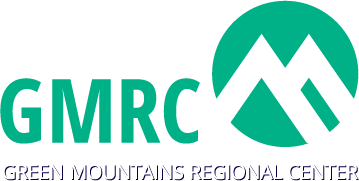Department of Homeland Security (DHS) states that labor force data published by the American Community Survey (ACS) and the Bureau of Labor Statistics (BLS) qualify as reliable and verifiable data sources, so these two datasets can be used to provide evidence that a site qualifies as a High Unemployment TEA.

EB-5 PROJECTS

GMRC only sponsors new commercial enterprise businesses that qualify for Rural Targeted Employment Area (TEA) designation. GMRC and other industry experts feel a Rural TEA is safer than a High Unemployment TEA because a Rural TEA designation cannot change quickly. A High Unemployment TEA can change very quickly, and the reduced investment amount be potentially denied at the time an investor’s I-526 is reviewed by USCIS.
There is a specific set of criteria that an EB-5 project location must meet to qualify for Rural TEA designation. Rural areas must not be within a metropolitan statistical area as labeled by the U.S. Office of Management and Budget. A rural area must also be outside of a town or city that has a population of 20,000 residents based on the most recent decennial U.S. Census (currently 2010). If the project location is a rural area at the time of the EB-5 investment, then it may be designated as a Rural TEA, and qualifies the investor for the reduced EB-5 investment amount of $900,000 USD.
Under the new rules, states are no longer permitted to certify High Unemployment TEAs, and so each I-526 must include evidence documenting that the area where the petitioner has invested or is actively in the process of investing is a high unemployment area at the applicable time of determination. According to USCIS, evidence for high unemployment TEAs should be reliable and verifiable and could consist of the following:
Location where the project is principally doing business
Map that clearly demonstrates the census tract or tracts that are included in the proposed TEA
(Limited to directly adjacent tracts only, if proposing multiple tracts)
Detail behind the calculations of the weighted average of the unemployment rate for the proposed TEA
A source of “reliable and verifiable” unemployment statistics for the proposed TEA.
An EB-5 project can qualify as a High Unemployment TEA if the principal location of the project is located in a high unemployment area at the time the EB-5 investment is made or at the time the I-526 is filed (whichever comes first).
National and regional unemployment numbers fluctuate. It is expected that over the next couple years unemployment rates will be especially volatile as Covid-19 affects national and regional economies. Therefore, to enhance investor safety, GMRC only considers Rural TEA projects.
GMRC does not want to risk an investor’s qualifying investment amount doubling from $900,000 to $1,800,000 because of fluctuations in national and regional unemployment figures. Therefore, we only work with Rural TEA qualified EB-5 projects
Site Links
Newsletter
DISCLAIMER: THIS IS NOT AN OFFER TO SELL SECURITIES OR THE SOLICITATION OF AN OFFER TO PURCHASE SECURITIES. ANY OFFER TO PARTICIPATE IN ANY SPONSORED PROJECT MAY ONLY BE MADE PURSUANT TO A WRITTEN OFFERING MEMORANDUM. ANY SALE IN A SPONSORED PROJECT SHALL BE EVIDENCED BY A SUBSCRIPTION AGREEMENT EXECUTED BY A FOREIGN NATIONAL AND WILL BE OFFERED AND SOLD, TO THE EXTENT APPLICABLE, BOTH WITHIN AND OUTSIDE OF THE UNITED STATES IN RELIANCE ON EXEMPTIONS FROM REGISTRATION UNDER THE SECURITIES ACT, STATE LAWS AND THE LAWS OF JURISDICTIONS WHERE THE OFFERING WILL BE MADE.





